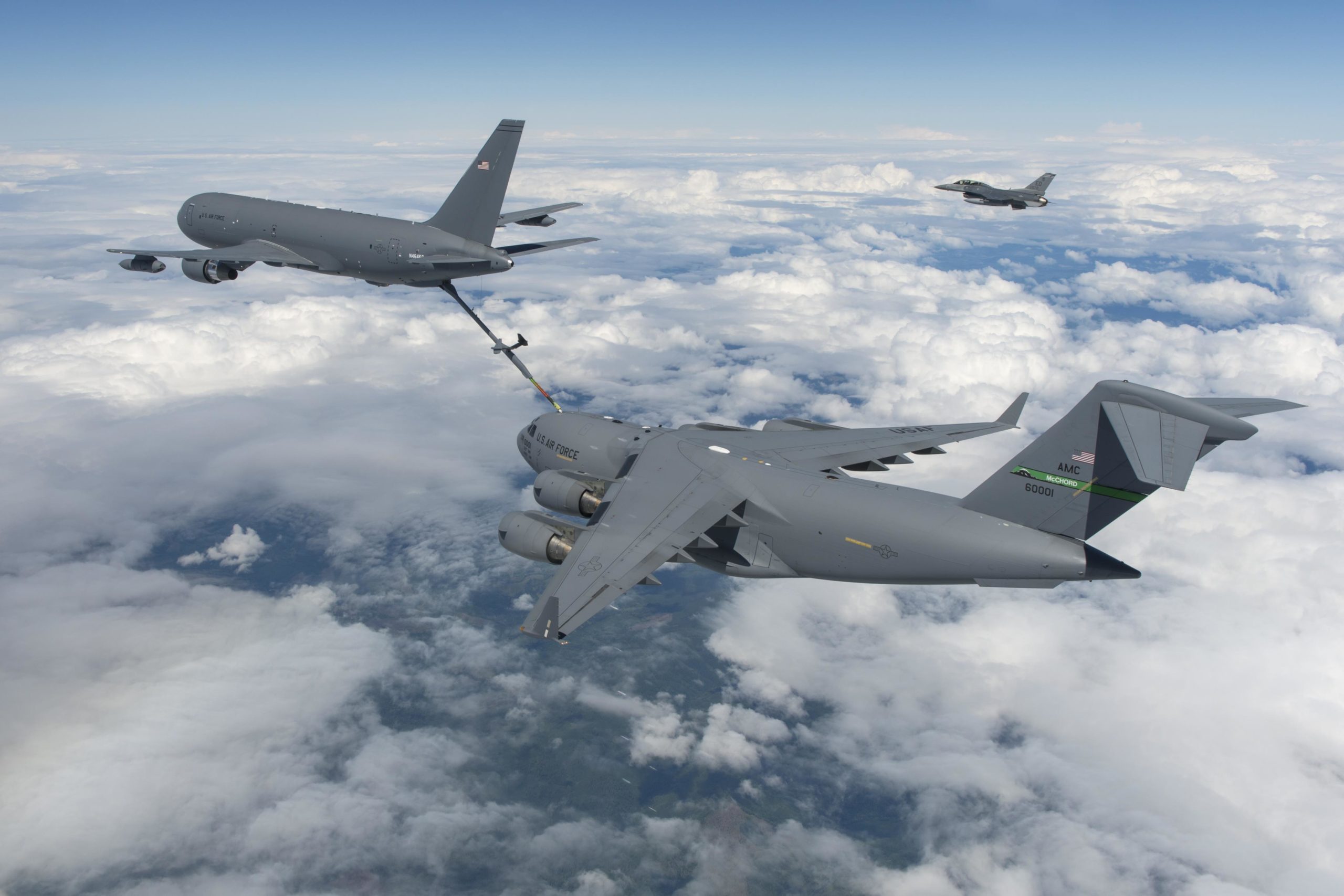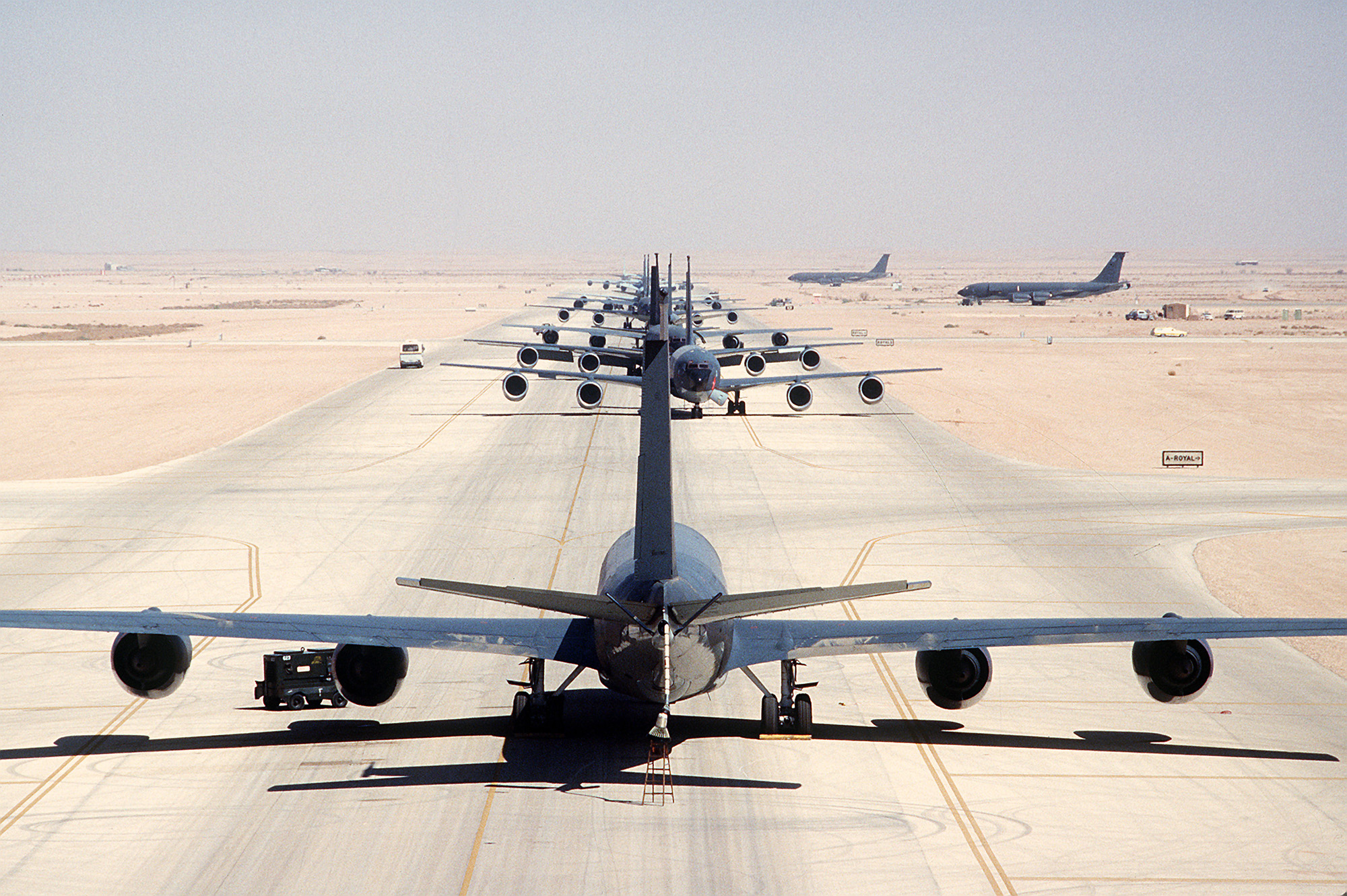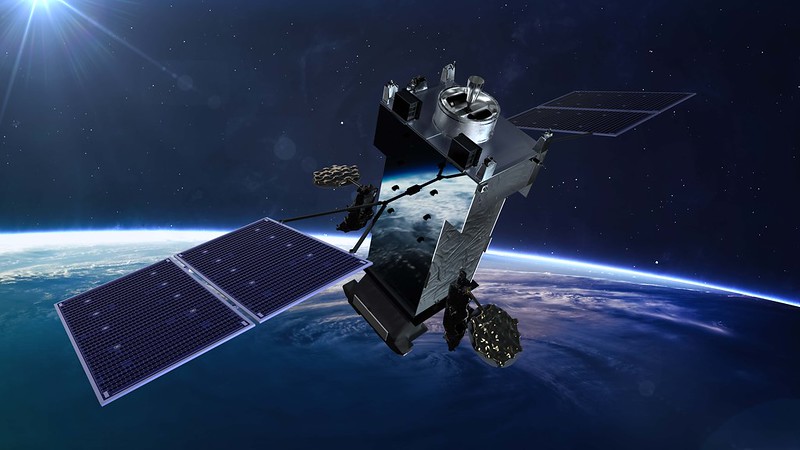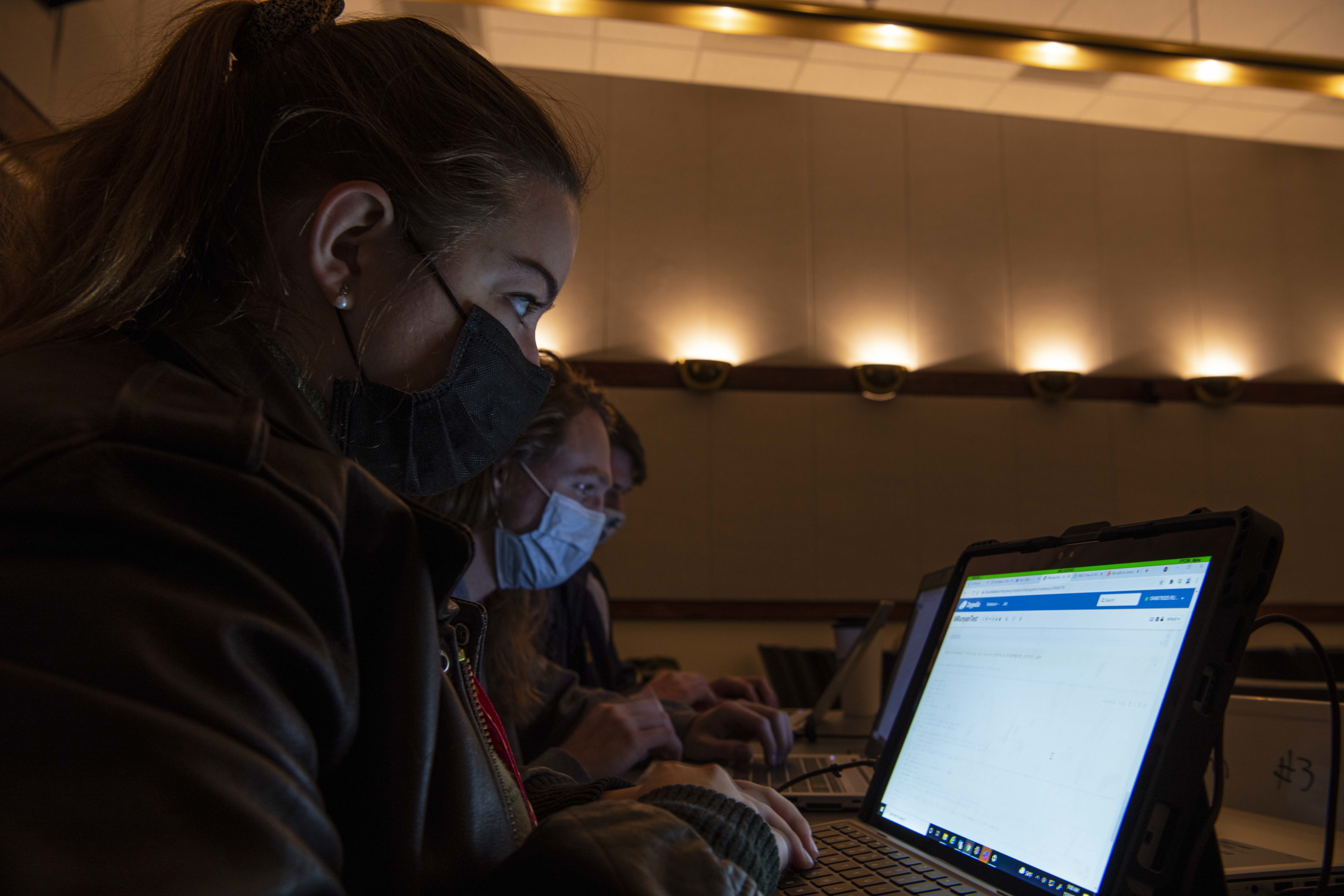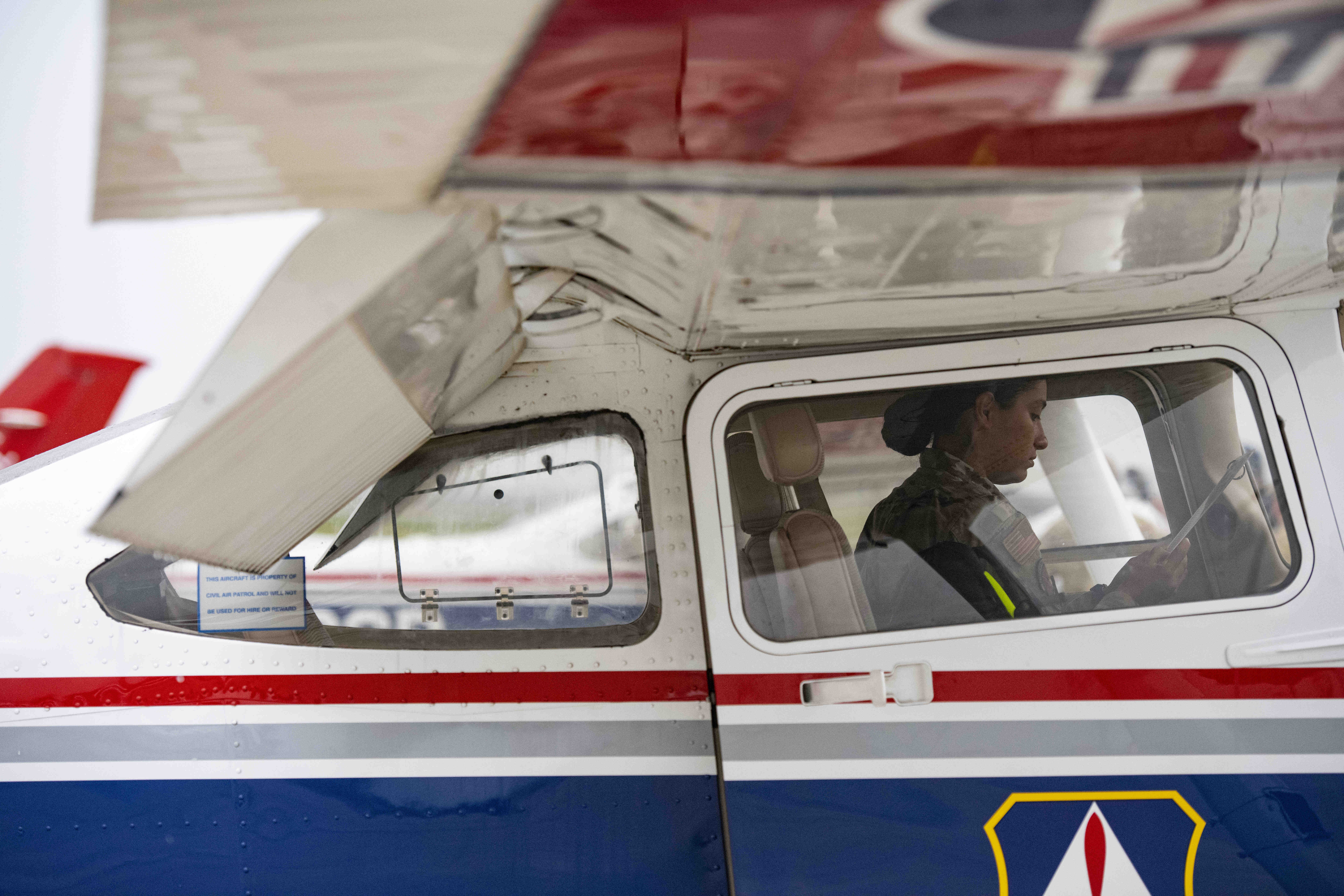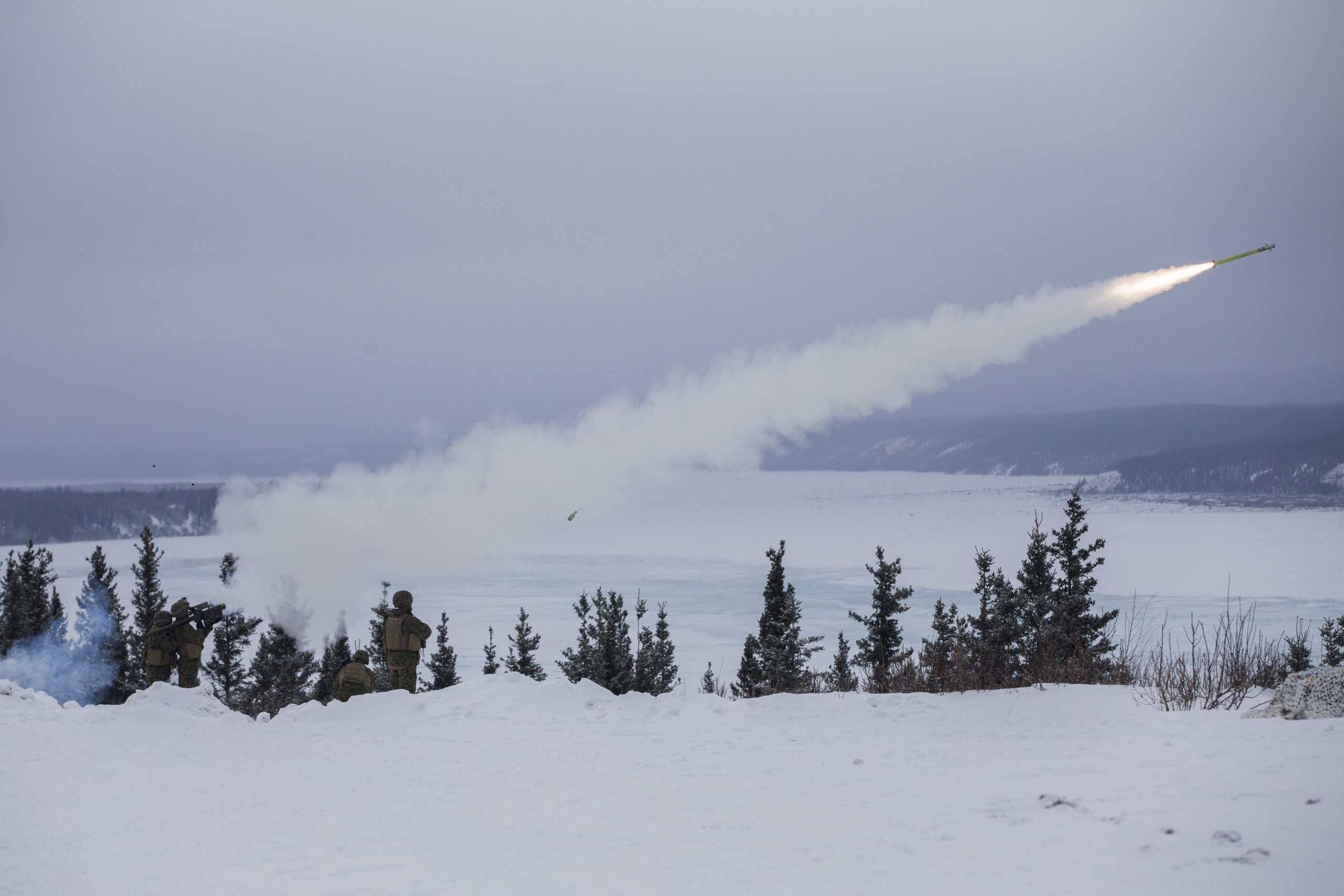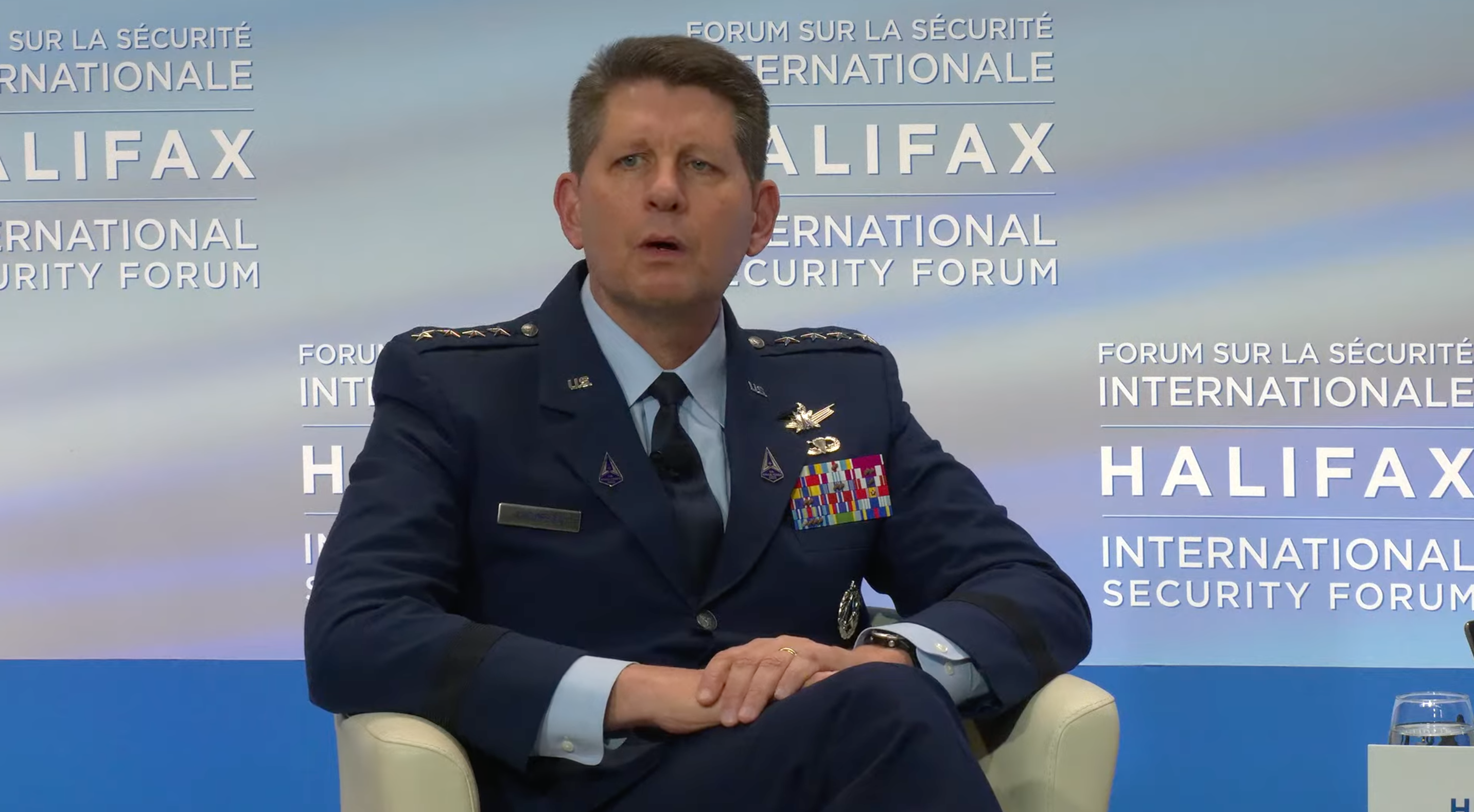Air Mobility Command’s KC-46 next generation refueler has been operating from five bases nationwide and for nearly two years, but lessons learned and problems encountered were not unified until a Nov. 17-18 Weapons Systems Council at McConnell Air Force Base, Kan.
“The KC-46, being a new platform, it did not have an established Weapons System Council, and so we were really lacking that as a community,” Col. Nate Vogel, commander of the 22nd Air Refueling Wing (ARW), told Air Force Magazine after the event and associated training exercises concluded.
“We’ve matured enough to where different organizations were getting to become experts in the weapon system,” he explained. “We wanted to make sure that as an enterprise, we stayed synchronized, understood the challenges that each other had and the opportunities that were out there, and then decided how best we could move this forward.”
The two-day event discussed problems and best practices, including approaches to agile combat employment (ACE) and aeromedical evacuation, areas that some bases have been practicing more than others. Participants also received a briefing on the KC-46’s cyber capabilities.
The Air Force currently has 50 KC-46 refuelers in its total force inventory and plans to procure 179 as it retires the KC-10 and a portion of its KC-135 flight. The remaining KC-135s will be upgraded until a bridge tanker comes online.
A total of 60 people participated in the weapons system council, including KC-46 wing commanders and senior enlisted leaders, operations group and squadron commanders, and operations experts from Guard, Reserve, and Active duty units. In attendance were representatives from McConnell’s 22nd ARW and 931st ARW, Air Mobility Command headquarters, Air Force Reserve Command headquarters, 4th Air Force, 60th Air Mobility Wing, 157th ARW, 97th AMW, 305th AMW, 916th ARW, 509th Weapons Squadron, and the Air Force Operational Test and Evaluation Center.
Three KC-46s also flew aircrews from McConnell, Altus Air Force Base, Okla., and Pease Air National Guard Base, N.H., to refuel F-16s from the Oklahoma Air National Guard’s 138th Fighter Wing.
“It was a good opportunity for us all to come together and learn from each other,” said Vogel.
Since the first KC-46 was delivered to McConnell on Jan. 25, 2019, it has flown 5,000 real-world missions conducting 25,000 boom and 1,400 drogue contacts. Three recent interim capability releases enable U.S. Transportation Command to task out refueling missions for the F-15, F-16, B-52, C-17, and other KC-46 receivers. The F/A-18A-F and EA-18G can also be refueled through the platform’s centerline drogue system. The TRANSCOM missions do not include deployments and alerts.
“It’s kind of fascinating, honestly, to see across the Air Force who really doesn’t even understand that the 46 is getting after it,” said Lt. Col. Joshua Moores, commander of the 344th Air Refueling Squadron, reflecting on the number of missions the aircraft is already handling.
The weapons council had four core objectives:
- Operationalize the KC-46
- Drive a “world-class enterprise culture”
- Establish a shared understanding of current and future problems
- Generate momentum toward initial operational capability (IOC) and full operational capability (FOC).
“With a young airframe, it’s very important to get that culture correct,” said Moores. “It is important that the weapons system council wings are moving toward that, which we had a great opportunity to all discuss, and to synchronize on these issues.”
Bases nationwide have been problem solving the new weapon system for nearly two years, developing local expertise as well as confronting similar challenges.
“Everybody’s getting after it,” Moores said. “But there’s still areas to improve processes. So, local process improvement came out of that, and then at the end was just the ability for all of those Airmen to have an understanding that at any point in time, they can go out and be interoperable with all of the KC-46 enterprise.”
McConnell is now synthesizing feedback on the problem areas discussed and ways forward to share with the group.
“Then we no kidding sit down over the next two to three weeks after that, and really nugget out as far as, ‘What is the exact problem? What do we think is the way ahead? Who is the person that we think should own the problem? And when do we think that it should be fixed,” said Vogel.
“As long as we keep doing that and then we go out and we keep performing and improving on the enterprise, I think that the work will speak for itself,” he added. “It really is starting to take off from our end.”
